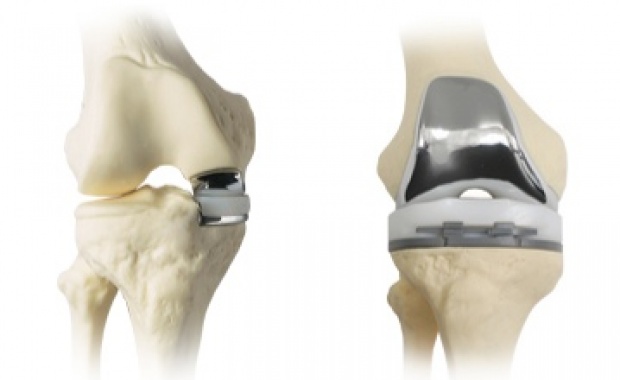
FEATURE — When patients go to the doctor in need of knee surgery, they are often surprised to learn they are candidates for a partial (rather than complete) knee replacement. Few patients are aware of this possibility.

Partial knee replacement surgery dates back to the early 1970s. Part of the appeal is it is a less invasive and less painful surgery, permits quicker post-operative recovery, provides improved range of motion, retains more healthy tissue and is less expensive.
Compared to a total knee replacement, a partial knee replacement is more likely to mimic the natural motion pattern of a normal knee. Other advantages include shorter hospital stays, better knee soft tissue balance and kinematics (motion) by preservation of certain ligaments.
Patients who’ve had partial knee replacements reported improved ability to kneel and maneuver up and down stairs. Patients also had lower pain scores, less need for assistive devices, lower chance of blood transfusion and risk of infection.
The incidence of complications after 20 years in partial knee replacements is 1.7 percent and in total knee replacements it is 4 percent. A few studies compared partial knee and total knee replacements in the same patient. They found a slight preference for the partial knee replacement.
Many patients ask if a partial knee is just a “bridge to a total knee replacement.” Outcome studies in 2002 and 2005 revealed 94 percent and 98 percent of the patients, respectively, did not require any further surgery. Published results of the durability of partial knee replacements in multiple series is comparable to outcomes reported by total knee replacement at 10 years.
Currently, only 10 percent of knee replacement surgeries in the country are partials, but recent studies indicate that up to 30 percent of knee replacement patients would likely be candidates for a partial knee.
Many patients are able to return to work and play sports within 4-6 weeks.
 Written by Randy Clark for St. George Health and Wellness magazine and St. George News.
Written by Randy Clark for St. George Health and Wellness magazine and St. George News.
St. George Health and Wellness website
Email: [email protected]
Twitter: @STGnews
Copyright St. George News, SaintGeorgeUtah.com LLC, 2015, all rights reserved.